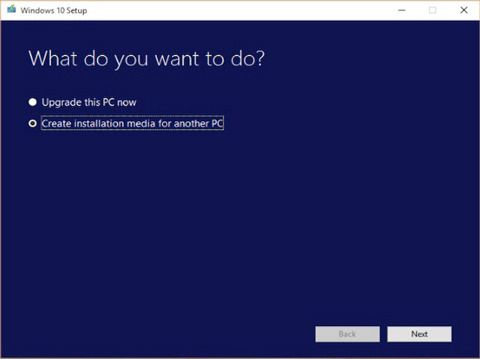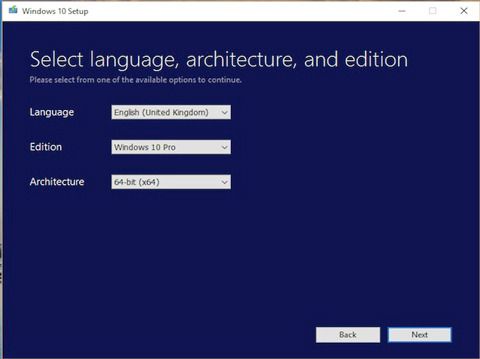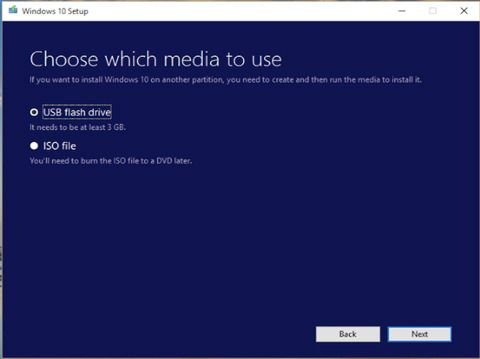
Now that Windows 10 is available for download, many of you might be planning to install Microsoft’s new desktop operating system on your computer. There are plenty of reasons to install Windows, and different editions to choose from. You can automatically upgrade to Windows 10 or you can make a bootable disk to install Windows 10 on one or more computers in a hurry.
You can choose to make a Windows 10 bootable USB disk or DVD, though the USB offers some advantages like faster read/ write speeds. You are also likely to have a USB drive lying around, or your computer may not have a DVD drive, in which case the decision is already made for you.
Make sure that the USB or DVD (if rewritable) you pick to be your Windows 10 bootable media has no important data on it, because this process will format the drive, which means you will lose everything on it. Also make sure that the drive is of minimum 4GB capacity, as the process requires 3GB of space. With that in mind, here’s is the list of steps you need to follow to make a bootable Windows 10 drive:
Download Windows 10 media creation tool:
32-Bit:
http://go.microsoft.com/fwlink/?LinkId=616935
64-Bit:
http://go.microsoft.com/fwlink/?LinkId=616936
To find out which type of Windows you are running, go to Start, typeControl panel, select System and security, and then, under System, look at the value for System type:
Manually determine which version of Windows is installed
Use the following methods to determine which version of Windows is installed, as appropriate for the operating system that you are running.
For Windows 8
There are two methods that you can use to determine whether you are running a 32-bit or 64-bit version of Windows 8. If one method does not work, try the other method.
Method 1: View the System window in Control Panel
1. Swipe in from the right edge of the screen, and then tap Search. Or, if you are using a mouse, point to the lower-right corner of the screen, and then click Search.
2. Type system in the search box, and then tap or click Settings.
3. Tap or click System.
4. If you are running a 64-bit version of Windows 8, 64-bit Operating System is displayed in the System type field under the Systemheading. If you are running a 32-bit version of Windows 8, 32-bit Operating System is displayed in the System type field under theSystem heading.
Method 2: View the System Information window
5. Swipe in from the right edge of the screen, and then tap Search. Or, if you are using a mouse, point to the lower-right corner of the screen, and then click Search.
6. In the search box, type system information.
7. Tap or click System, tap or click System Information, and then click System Summary.
8. If you are running a 64-bit version of Windows 8, x64-based PC is displayed in the System type field under the Item heading.
If you are running a 32-bit version of Windows 8, x86-based PC is displayed in the System type field under the Item heading.
If you cannot determine whether the computer is running a 32-bit or 64-bit version of Windows 8 by using these methods, go to the “Next Steps” section.
For Windows Vista or Windows 7
If you have Windows Vista or Windows 7, there are two methods to determine whether you are running a 32-bit version or a 64-bit version. If one method does not work, try the other method.
Method 1: View the System window in Control Panel
9. Click Start, type system in the Start Search box, and then click system in the Programs list.
10. The operating system is displayed as follows:
• For a 64-bit version operating system, 64-bit Operating System appears for the System type under System.
• For a 32-bit version operating system, 32-bit Operating System appears for the System type under System.
Method 2: View the System Information window
11. Click Start, type system in the Start Search box, and then click System Information in the Programs list.
12. When System Summary is selected in the navigation pane, the operating system is displayed as follows:
• For a 64-bit version operating system, x64-based PC appears for the System type under Item.
• For a 32-bit version operating system, x86-based PC appears for the System type under Item.
1. Once Media creation tool is installed, launch the application. When asked What do you want to do? select Create installation media for another PC, and click Next.

2. One the next screen, select your preferred Language and Architecture as determined in Step 1. Also choose Edition as explained below and click Next.

If you are currently running Windows 7 Starter, Windows 7 Home Basic, Windows 7 Home Premium, Windows 8, Windows 8.1, Windows 8.1 with Bing, or Windows 10 Home, choose Windows 10 Home as Edition.
If you are currently running Windows 7 Professional, Windows 7 Ultimate, Windows 8 Pro, Windows 8.1 Pro, Windows 8 Professional, Windows 8.1 Professional with Media Centre, or Windows 10 Pro, choose Windows 10 Pro as Edition.
If you are currently running Windows 8 Single Language, Windows 8.1 Single Language, or Windows 8 Single Language with Bing, choose Windows 10 Home Single Language as Edition.
If you are currently running Windows 8 Chinese Language Edition, Windows 8.1 Chinese Language Edition, or Windows 8 Chinese Language Edition with Bing, choose Windows 10 Home China as Edition.
3. If you are creating a bootable Windows 10 USB disk, select USB flash drive and click Next to follow the rest of the steps. A reminder once again you will lose whatever data is there in the drive you select.

If you want to create a bootable Windows 10 USB DVD, select ISO file. Make sure you have ISO file of the Windows 10 version you selected in step 3 handy. ISO files are basically images of the setup files.
Once Windows 10 media creation tool has finished doing its job, you should have a Windows 10 bootable USB disk/ DVD drive, depending upon the option you chose.
.



















5 Responses to this entry.
Thanks very useful for me